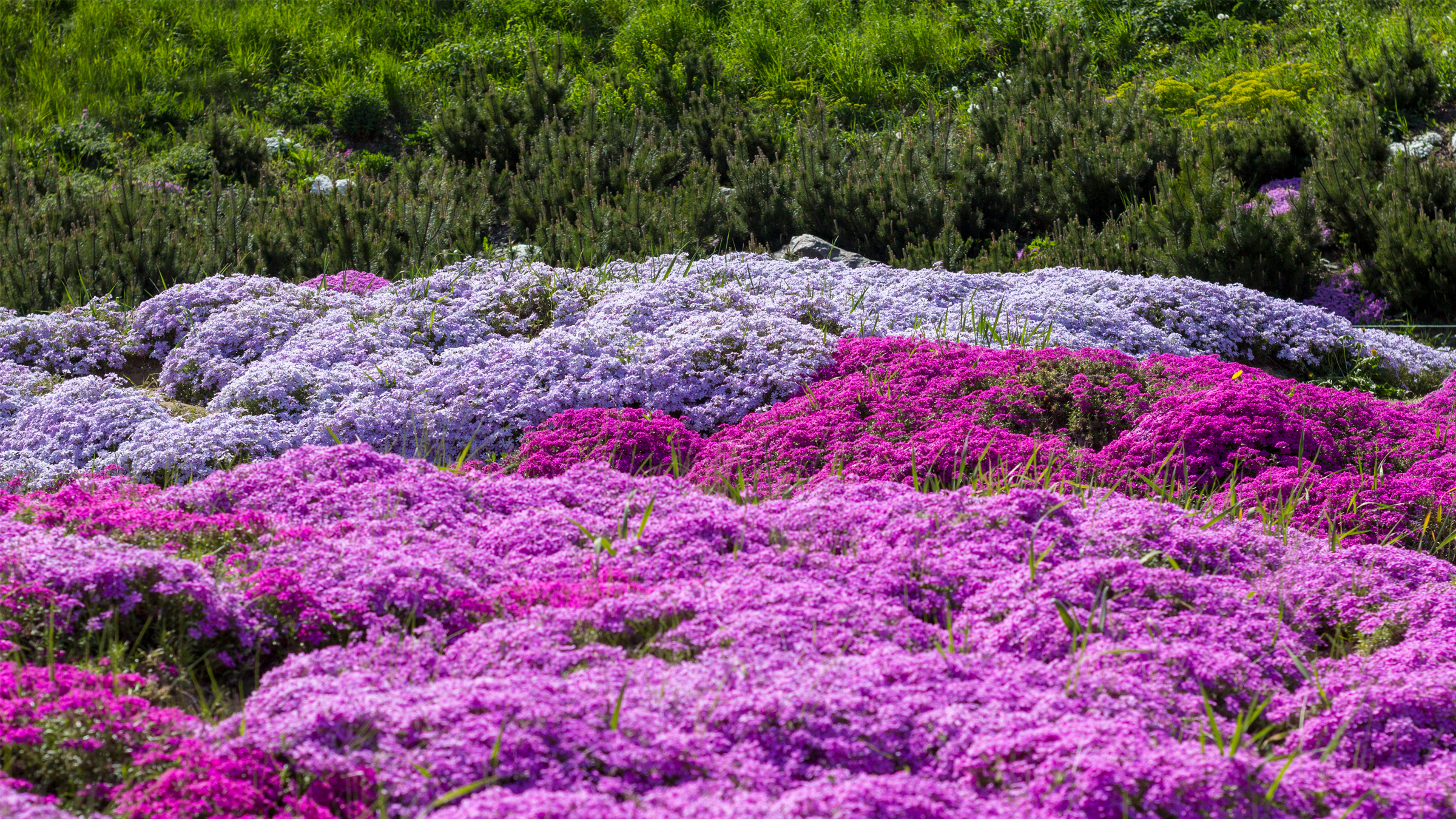Don't miss April's full Pink Moon this Saturday
Here's when to see it.

April's full moon, or Pink Moon — named for the brilliant-pink flowers blooming in early spring — will bathe the sky in bright moonlight this Saturday (April 16).
The Pink Moon will be fully illuminated for just a moment, at 2:55 p.m. EDT (18:55 GMT), but it will appear full for three days in total: From Friday morning (April 15) through early Monday (April 18), according to NASA.
In other words, this will be "a full moon weekend," Gordon Johnston, a program executive in the Science Mission Directorate at NASA Headquarters in Washington, D.C., wrote in the NASA statement.
The full moon occurs about once a month when the sun, Earth and moon line up on an imaginary 180-degree line. The moon's orbit is about 5 degrees different than Earth's, so it is usually a little higher or lower than Earth's shadow, which allows the sun's rays to illuminate its nearside, or the side facing Earth, Andrea Jones, a science communicator at NASA, previously told Live Science in a video interview.
Related: Photos: Super Blood Wolf Moon eclipse stuns viewers
Sometimes during a full moon, part or all of Earth's shadow falls on the moon, making it a lunar eclipse. The next lunar eclipse will happen next month, on May 15-16, 2022, when a total lunar eclipse will turn the moon a rusty red, giving it the eerie moniker "blood moon." The normally white moon turns red because some of the sun's light goes around Earth, where our atmosphere filters out the shorter wavelengths, such as blue and purple, but allows red and orange wavelengths through, meaning they can reach the moon and turn it burgundy, Live Science previously reported. May's total lunar eclipse will be visible from parts of North and South America, Europe, Africa and Asia, according to timeanddate.com.
April's Pink Moon will also be a sight to behold. While it won't actually appear pink, it gets its name from the flower herb moss pink, also called creeping phlox, moss phlox or mountain phlox, a plant native to the eastern U.S. that blooms in early spring, according to NASA. Other names for April's moon include Sprouting Grass Moon, the Egg Moon and Fish Moon, as this is when shad historically swim upstream to spawn, according to the Maine Farmer's Almanac, as reported by NASA.
Sign up for the Live Science daily newsletter now
Get the world’s most fascinating discoveries delivered straight to your inbox.

This moon is also known as the Pesach or Passover Moon, as the Jewish holiday Passover begins at sundown on Friday and lasts for eight days (seven days for Reform Jews and Jews in Israel). During the Seder, a ritual-packed feast held on each of the first two nights of Passover, families remember the biblical events of Moses liberating the Israelites from slavery in Egypt.
For Christians, this is the Paschal Moon, which helps determine the date of Easter. Paschal is the Latinized word for Pesach. Western Christianity observes Easter, a holiday celebrating the resurrection of Jesus Christ, on the first Sunday after the first full moon of spring, which explains why Easter is on April 17 this year. Eastern Christianity, on the other hand, uses the Julian instead of the Gregorian calendar and also doesn't celebrate Easter during Passover, so Eastern Orthodox churches will celebrate Easter on April 24 this year, according to Britannica.
Meanwhile, Hindus will be celebrating Hanuman Jayanti, which observes the birth of Lord Hanuman and corresponds with, in most regions, the full moon of Chaitra, a month in the Hindu lunar calendar.
For Buddhists, particularly in Sri Lanka where it is a national holiday, this full moon marks Bak Poya, a day to remember when the Buddha visited Sri Lanka and averted a war by settling a dispute between chiefs, NASA reported.
After the Pink Moon in April and the total lunar eclipse in May, skywatchers will be dazzled by the alignment of five planets in the sky, Live Science previously reported. The summer will also usher in two supermoons in a row. June's full Super Strawberry Moon on June 14 and July's Super Buck Moon on July 13 will appear up to 14% brighter and 7% bigger than average full moons, according to timeanddate.com.
Originally published on Live Science.

Laura is the archaeology and Life's Little Mysteries editor at Live Science. She also reports on general science, including paleontology. Her work has appeared in The New York Times, Scholastic, Popular Science and Spectrum, a site on autism research. She has won multiple awards from the Society of Professional Journalists and the Washington Newspaper Publishers Association for her reporting at a weekly newspaper near Seattle. Laura holds a bachelor's degree in English literature and psychology from Washington University in St. Louis and a master's degree in science writing from NYU.










